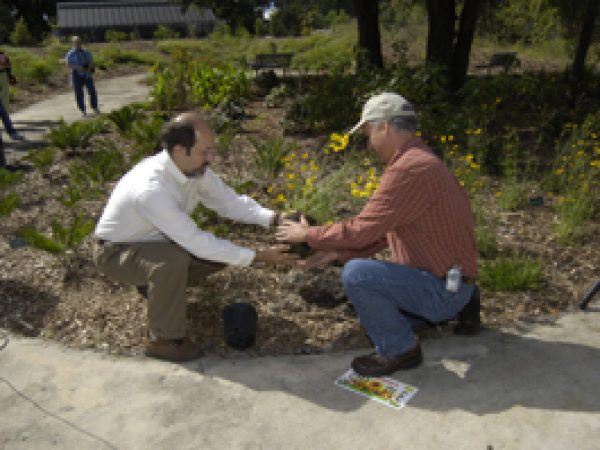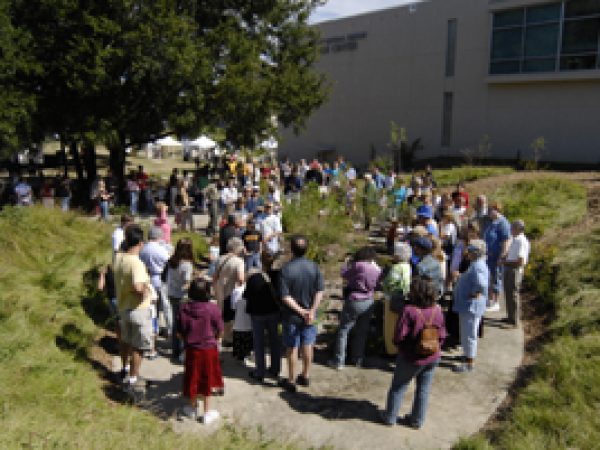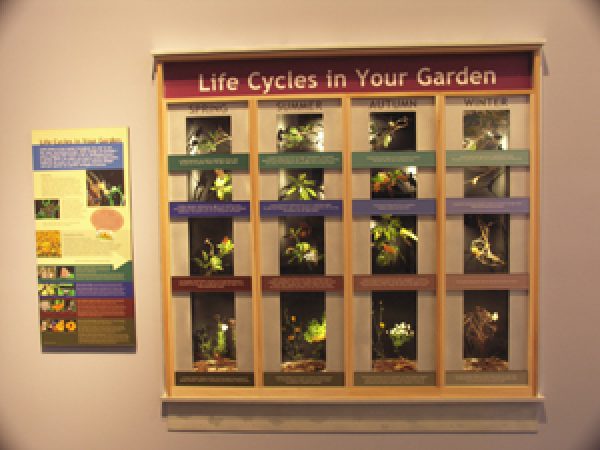Come visit our native wildflower garden in Gainesville, Florida! Planted in fall 2006 next to the west side of the McGuire Center at the Florida Museum of Natural History, University of Florida, the garden beckons visitors to imagine how they could transform their yards into an inviting and colorful, yet practical and water-saving, mecca for butterflies and other wildlife.
The Florida Wildflower Council appropriated funds from the Florida wildflower license tag revenue for the garden, this website, an accompanying brochure, and a wildflower and butterfly display in the Florida Museum of Natural History. The display shows the life cycles of four butterflies and depicts how the plants they use change in appearance over the four seasons.

Jeff Caster, vice-chair, Florida Wildflower Advisory Council, right, with Jaret Daniels, assistant professor of entomology, McGuire Center, plant the state wildflower, Coreopsis, at the wildflower garden dedication on October 14, 2006

Butterfly festival goers flock to the new wildflower garden at the October 2006 dedication.

"Life Cycles in Your Garden," Florida Museum of Natural History
Come along for a tour of the garden…

The sloped expanse on the west side of the McGuire Center awaits a transformation.

The site is prepped and construction of a sidewalk begins.

Segments of the sidewalk cure as others are completed.

Weeks later, Florida wildflowers decorate the landscape and water-saving mulch blankets the bare earth.
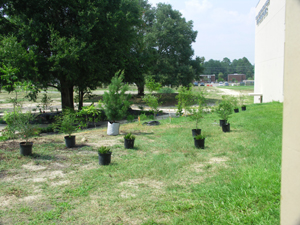
Potted trees and shrubs arrive on the south rim.
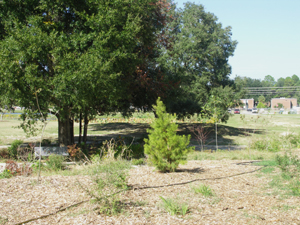
Once mature, they will serve as a lush green backdrop to accent the rich color in the main sections of the garden.
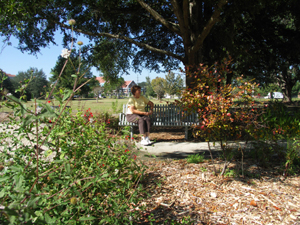
A visitor enjoys the dancing color.
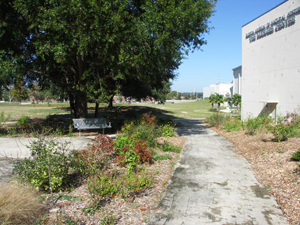
Flowering plants such as tropical sage and firebush, along with Elliott’s lovegrass, serve as a focal point.
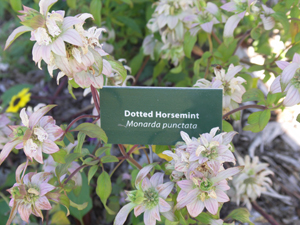
Plant identification signs give the common and scientific names.
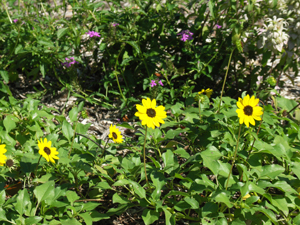
Dune sunflower is a drier-habitat beach plant, but it adapts in well-drained gardens.

A Gulf Fritillary samples snow squarestem and tropical sage.
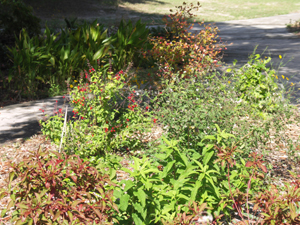
A profusion of mixed color resembles a cottage garden.
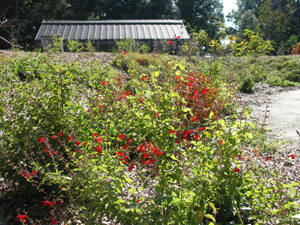
Afternoon sun drenches tropical sage, which thrives when spent flower heads are pinched off regularly.
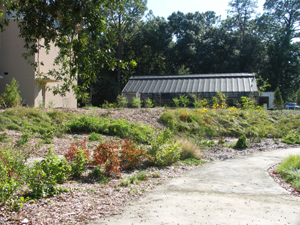
Grasses and mulch stabilize the back slope.

A native, but aggressive, marigold rims a nearby pond and complements the wildflower garden.
 Jeff Caster, vice-chair, Florida Wildflower Advisory Council, right, with Jaret Daniels, assistant professor of entomology, McGuire Center, plant the state wildflower, Coreopsis, at the wildflower garden dedication on October 14, 2006
Jeff Caster, vice-chair, Florida Wildflower Advisory Council, right, with Jaret Daniels, assistant professor of entomology, McGuire Center, plant the state wildflower, Coreopsis, at the wildflower garden dedication on October 14, 2006 Butterfly festival goers flock to the new wildflower garden at the October 2006 dedication.
Butterfly festival goers flock to the new wildflower garden at the October 2006 dedication. "Life Cycles in Your Garden," Florida Museum of Natural History
"Life Cycles in Your Garden," Florida Museum of Natural History